Estate Jewelry: Crab Rings and the Emperor of All Bird Brooches
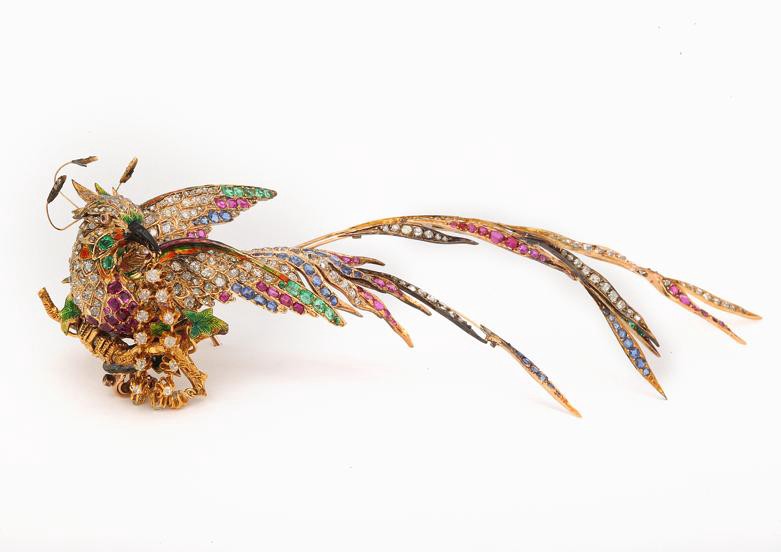
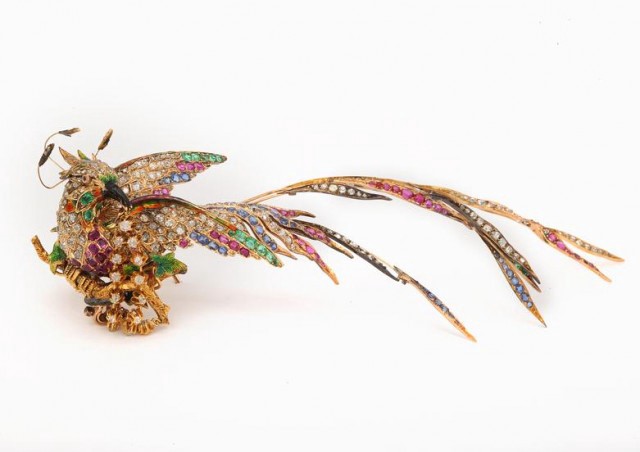
This brooch is so beautiful I’m tempted to just leave it here, with no explanation, nothing. Just look at it.
No, don’t worry, I won’t do that. English, circa 1900, this brooch is five inches long, and is an absolute masterpiece of delicacy. Rubies, sapphires, and diamonds are set into a base of silver and gold feathers, while subtle enameling highlights the edges of the wings, as well as the leaves of the branch that the bird is using as a support. Enamel also highlights the bird’s face, and he appears to be dangling a wreath of diamond-set flowers from his beak.
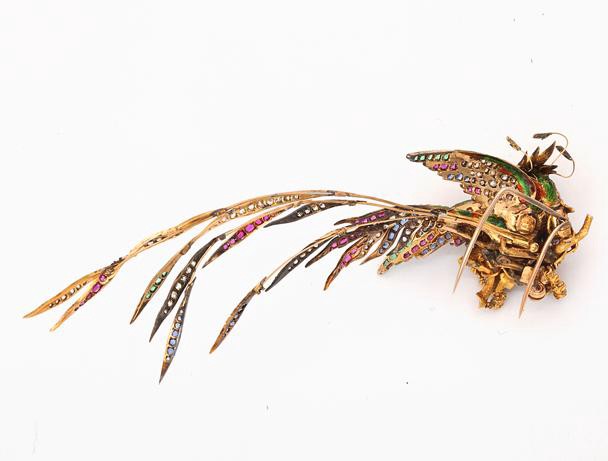
It’s pieces like this that make me love jewelry. The use of both silver and gold to create a variegated base palette for the feathers shows the thought that went into the design, and the back is just as stunning as the front.
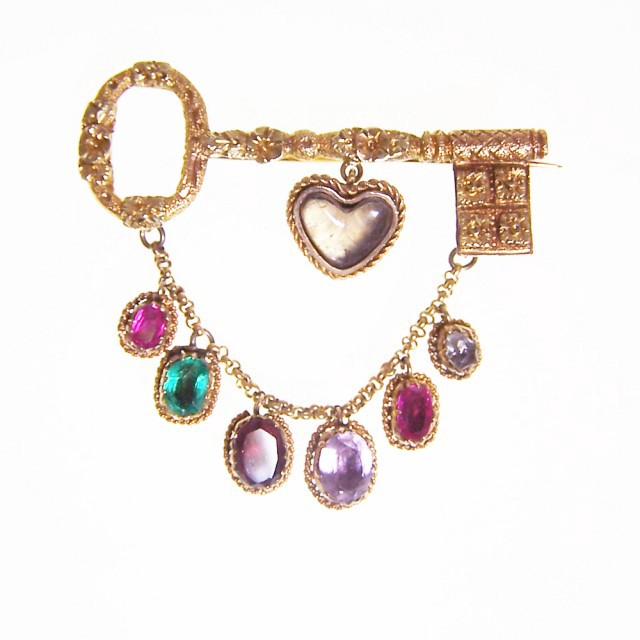
Remember the “Dearest” ring? This 18k gold Georgian brooch is also gem-coded. The six stones hanging beneath the key, when listed by their first letters, spell out “regard.” The dealer doesn’t identify the stones individually, but the stones used in “Regard” pieces were usually Ruby, Emerald, Garnet, Amethyst, Ruby, and Diamond. The sentimental coding, combined with the key theme, make this a particularly lovely and unusual piece. Circa 1780.
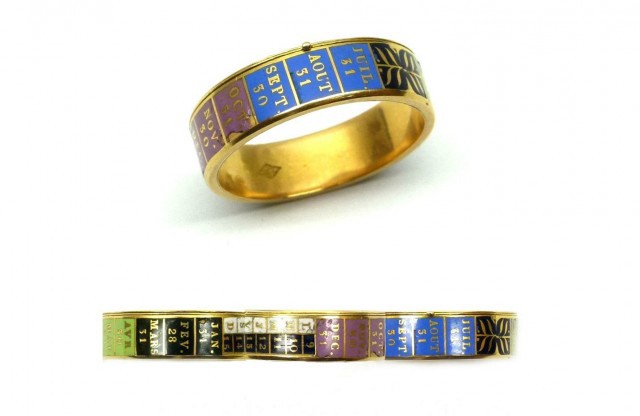
This is a Swiss calendar ring, circa 1820. Using different colors of enamel, the designer divided the gold band into four sections that indicate the months of the year. There’s an additional section that lists the days of the week alongside a column of dates. The dates can be adjusted via a sliding mechanism, which is controlled by the small gold ball you see at the top edge of the ring. Those clever Swiss!
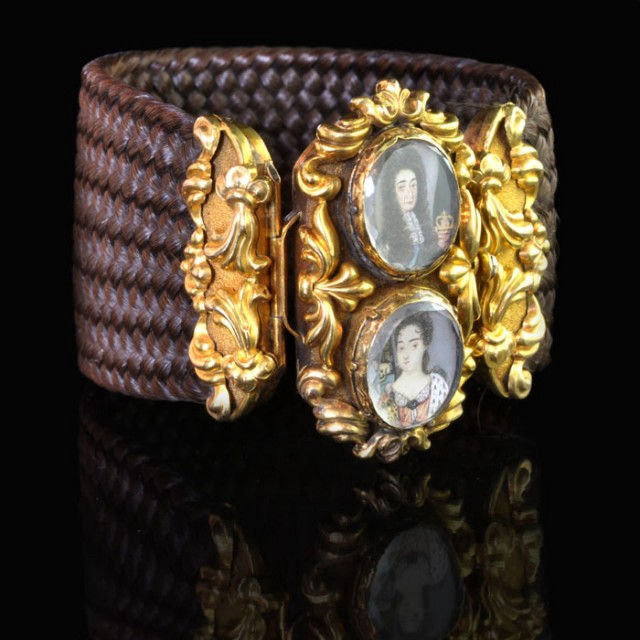
Circa 1830, this extraordinary bracelet pairs an ornate gold buckle with a meticulously braided hairwork band. The two oval miniatures set into the buckle depict William and Mary of England.
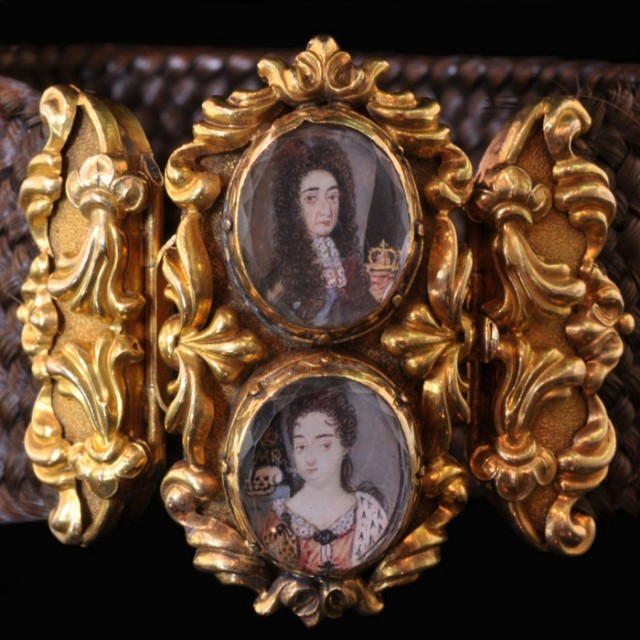
Quite the lookers, weren’t they?
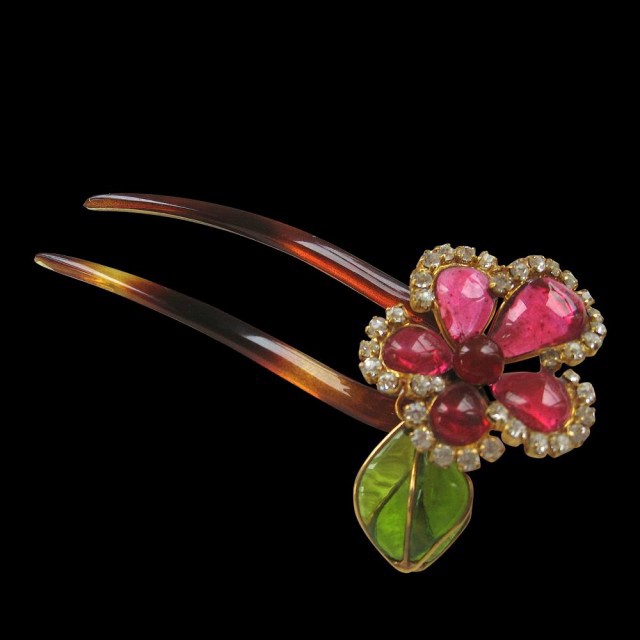
This hairpin is by Gripoix, and it isn’t that old — it dates to around 1980. It’s a costume piece, made of resin, colored glass and “strass,” or paste diamonds.
Gripoix is an interesting company; it was formed in 1869 by Frenchman Augustine Gripoix, and it’s teamed up with some of the biggest names in couture ever since. The company is probably best known for their collaboration with Chanel, but they have also worked with Worth, Dior, Givenchy, Balenciaga, Yves Saint Laurent, and multiple other fashion houses. Gripoix is particularly renowned for using a precise technique of casting glass called pâte de verre, or “poured glass,” and the company continues to produce new jewelry today.
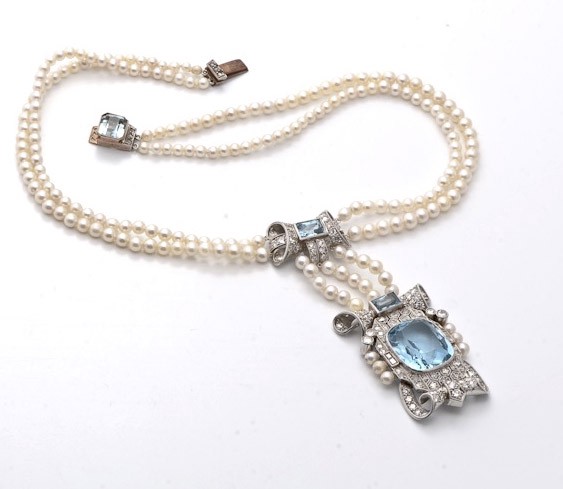
This necklace highlights a beautiful cushion-cut aquamarine set in platinum and surrounded by diamonds and pearls.
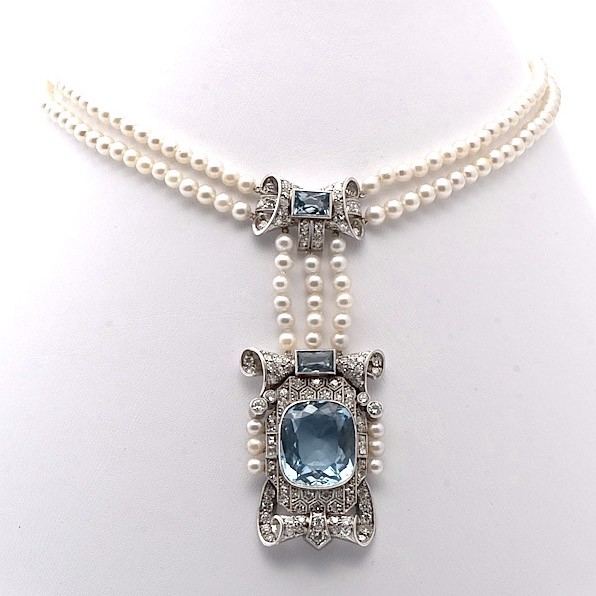
The length of the pearl chain is 15″, so the central portion of the chain (featuring another aquamarine surrounded by diamonds) would rest at the base of the throat, leaving the pendant to hang below. The clasp also includes another sizable aquamarine.
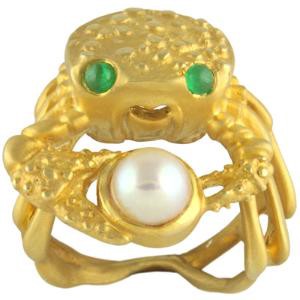
Look, this little 18k gold fiddler crab with emerald eyes wants to give you a pearl!
This is a contemporary ring, designed by married couple Manya Tessler and Roumen Vragov. The pair create jewelry that is “wearable sculpture,” and have won many awards for their work, which is often animal-themed. This little guy is just too cute not to share with you!
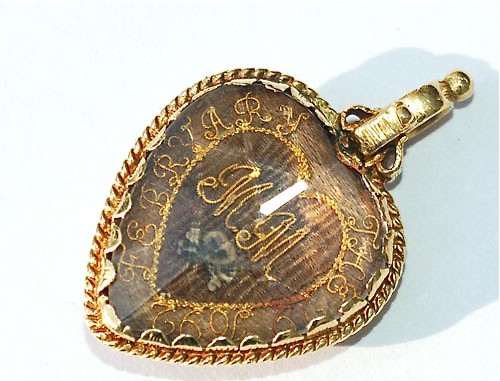
Oh, hello, my initials! I guess somebody’s just going to have to buy this for me, right?
This 17th century heart-shaped Stuart crystal pendant is double-sided. Each side combines woven hairwork with a skull-and-crossbones motif to commemorate the death of a loved one. On the one side, the initials MM are depicted in gold cipher lettering with “February the 29 1699” spelled out in full around the border. The reverse features mirrored cipher initials of JB, surrounded by “April the 04 1691.” The setting itself is high-carat gold, and is intricately detailed on both sides.
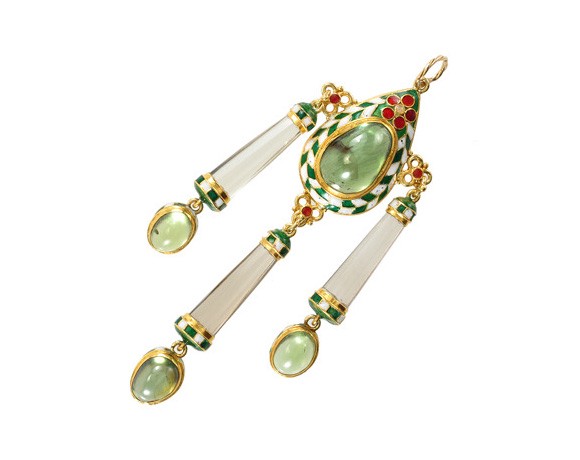
This gorgeous Renaissance Revival pendant dates to circa 1860. It’s in the “Holbeinesque” style, which combines stylized enamel designs with a central stone.
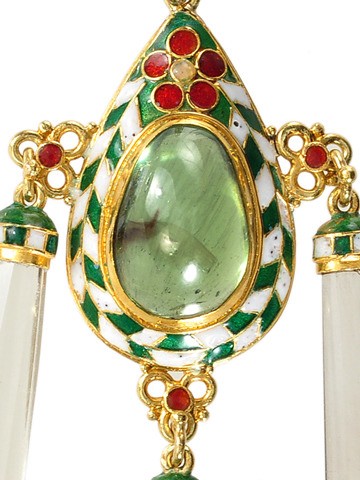
The stone is a cabochon-cut prasiolite (green quartz), surrounded by white, green, and red enameling on 18k gold. Three drops hang from the central piece, each one combining white and green enameling with a prasiolite drop.
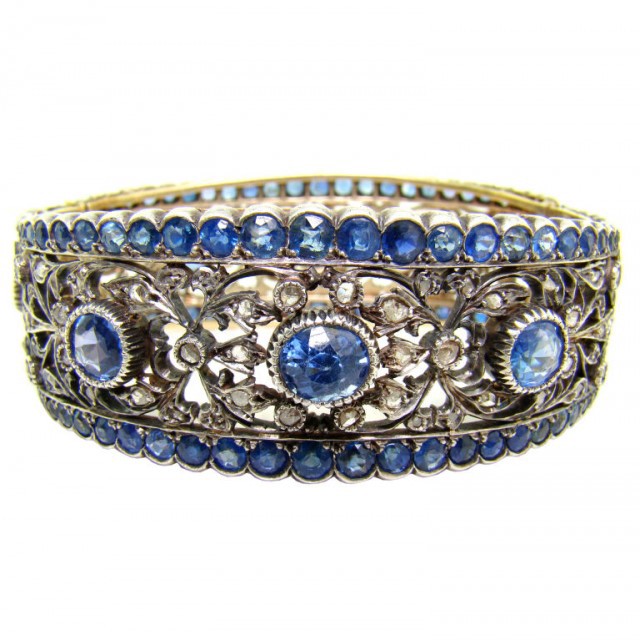
Circa 1880, this Victorian silver-over-gold bracelet features an intricate floral motif incorporating 150 rose-cut diamonds and six large sapphires of graduating sizes (the smallest being 1.25 cts). One hundred and eight sapphires form the border.
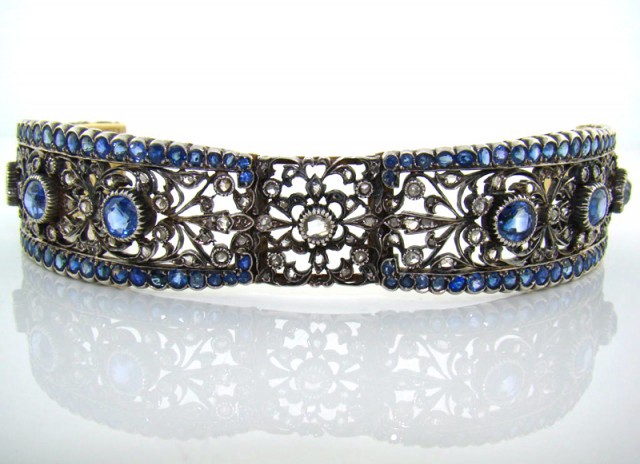
The bracelet is hinged so that both sides open out, and it also has a carved clasp. Beautiful.
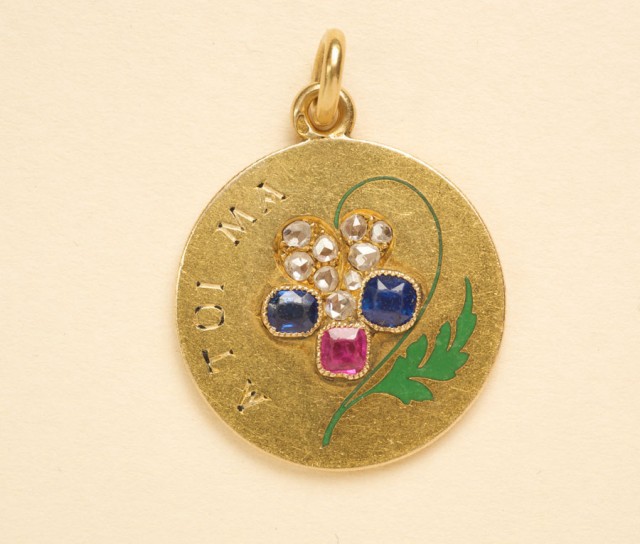
More coded jewelry! Circa 1900, this French 18k pendant states “A toi ma pensée” (I think of you) — but the “penseé” has been replaced with a pansy, awwww. The flower features petals of rose-cut diamonds, sapphires, and a ruby, and the stem and leaf are green enamel. So sweet!
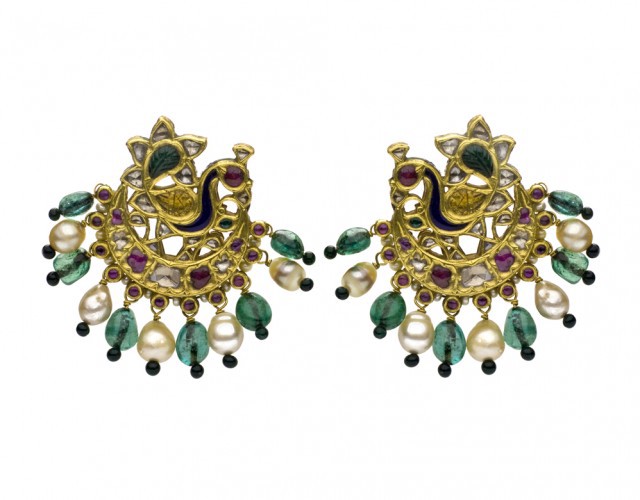
Originating in Lucknow, India, in the 19th century, these earrings combine diamonds, yellow sapphire, and rubies with gold to form a peacock shape. Each has a fringe of emerald and Basra pearl (natural pearls from Basra, Iraq) drops. Lucknow, which is sometimes referred to as the “Constantinople of India,” is one of the country’s oldest cities, and was the cultural and artistic capital of Northern India during the 18th and 19th centuries.
Previously: The Birds and the Beetles.
Monica McLaughlin wants to design a ring that spells out “bacon.”